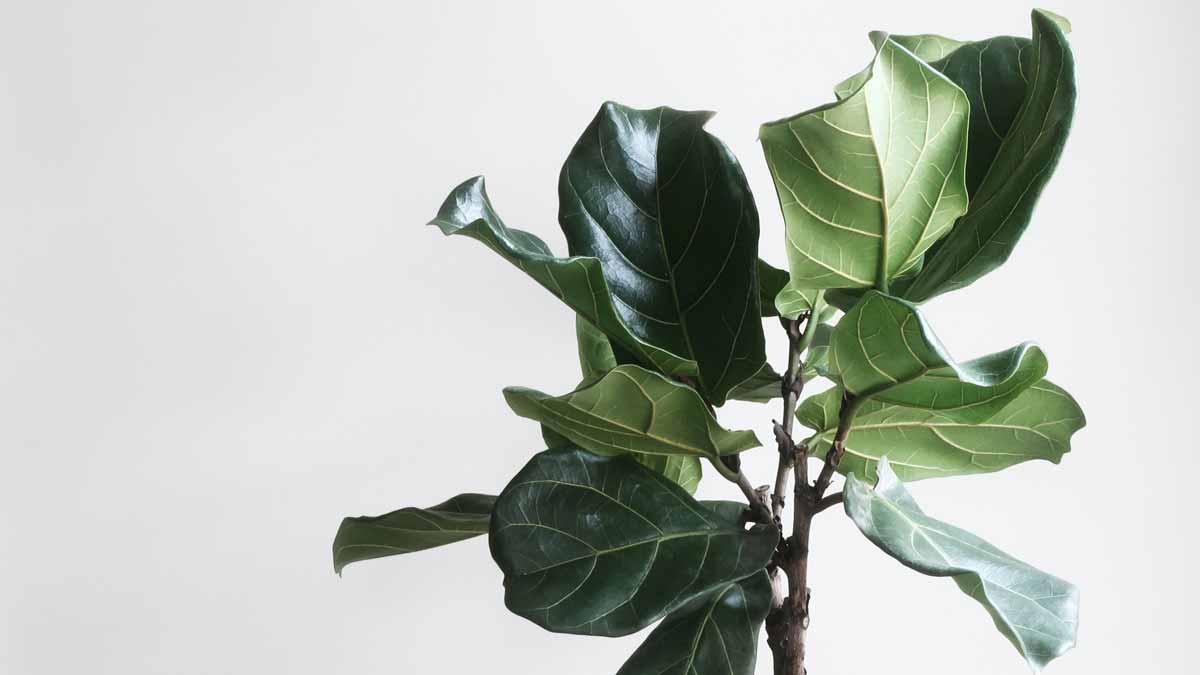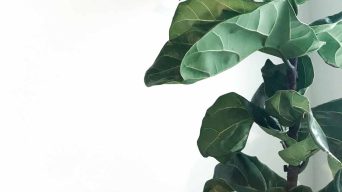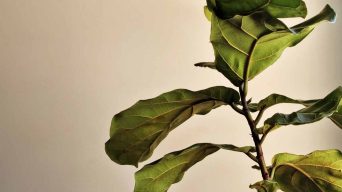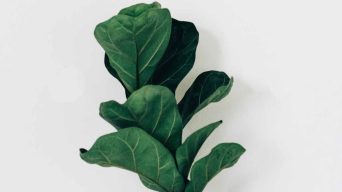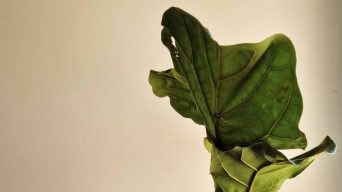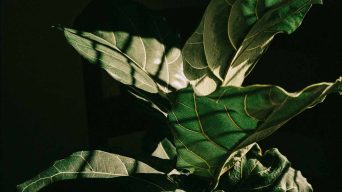Fiddle Leaf Fig plants are popular houseplants known for their large, green leaves.
These plants can brighten up any room and are relatively easy to care for.
However, one problem you may encounter with your Fiddle Leaf Fig is curling leaves.
There are several reasons why the leaves of your Fiddle Leaf Fig plant may be curling, and thankfully, there are also several solutions.
Why Are My Fiddle Leaf Fig Leaves Curling and How Can You Fix It?
There are several reasons why your Fiddle Leaf Fig leaves may be curling.
You need to identify the cause to find the best solution.
Here are some of the most common reasons for Fiddle Leaf Fig leaves curling, as well as what you can do to fix it.
1. Underwatering
Fiddle Leaf Figs are native to tropical regions and need consistent moisture to stay healthy.
If your plant is showing signs of leaves curling, it might be due to underwatering.
Underwatering a Fiddle Leaf Fig can cause the leaves to curl in many ways.
First, it can cause the leaves to become dry and crispy. As the water content of the leaves decreases, they will begin to wrinkle and shrink.
Eventually, the leaf will curl up tightly, forming a tube-like shape. In addition, underwatering can also cause the stems of the Fiddle Leaf Fig to become weak and brittle.
This situation may result in the leaves drooping or falling off entirely.
Ultimately, whether or not a Fiddle Leaf Fig survives depends on how quickly it is watered after showing signs of stress.
How To Fix It
If you think your Fiddle Leaf Fig is suffering from underwatering, the best action is to water it immediately.
Be sure to give the plant a deep watering until water runs out of the drainage holes at the bottom of the pot.
Once you have watered your plant, monitor it closely over the next few days.
If the leaves continue to curl, it is likely the plant is not getting enough water.
In this case, you will need to water more often.
During the growing season (spring and summer), Fiddle Leaf Figs should be watered every 7-10 days.
During the dormant season (winter), they can be watered every 2-3 weeks.
2. Overwatering
While underwatering is a common cause of Fiddle Leaf Fig leaves curling, overwatering can also be problematic.
If the leaves of your plant are curling and yellowing, it could be a sign that you are overwatering your Fiddle Leaf Fig.
Overwatering can cause your plant’s roots to rot, leading to several problems, including leaf curling.
When the roots of a plant are rotted, they cannot absorb water and nutrients as effectively.
This can lead to the leaves of the plant curling and yellowing.
Other common symptoms of overwatering are:
- Soil that is soggy or muddy
- Waterlogged soil
- Brown or yellow leaves
- Leaves that are dropping off
- Mold or mildew on the leaves
How To Fix It
If you think you are overwatering your Fiddle Leaf Fig, the first step is to check the soil.
Stick your finger into the soil and feel around.
If the soil is wet or soggy, it’s time to let it dry out.
The best way to do this is to stop watering your plant for a week or two and see if the leaves start to uncurl.
If the leaves do not uncurl after a week or two, you may need to repot your plant.
Check the roots of your plant to see if they are rotted.
If the roots are rotted, repot your plant in fresh, dry soil.
Once you have fixed the overwatering problem, water your Fiddle Leaf Fig plant only when the top inch of soil is dry.
Stick your finger into the soil to check it.
If the soil is dry, water your plant until the water drains out of the bottom of the pot.
Be sure to empty any water collected in the saucer under the pot.
3. Low Humidity
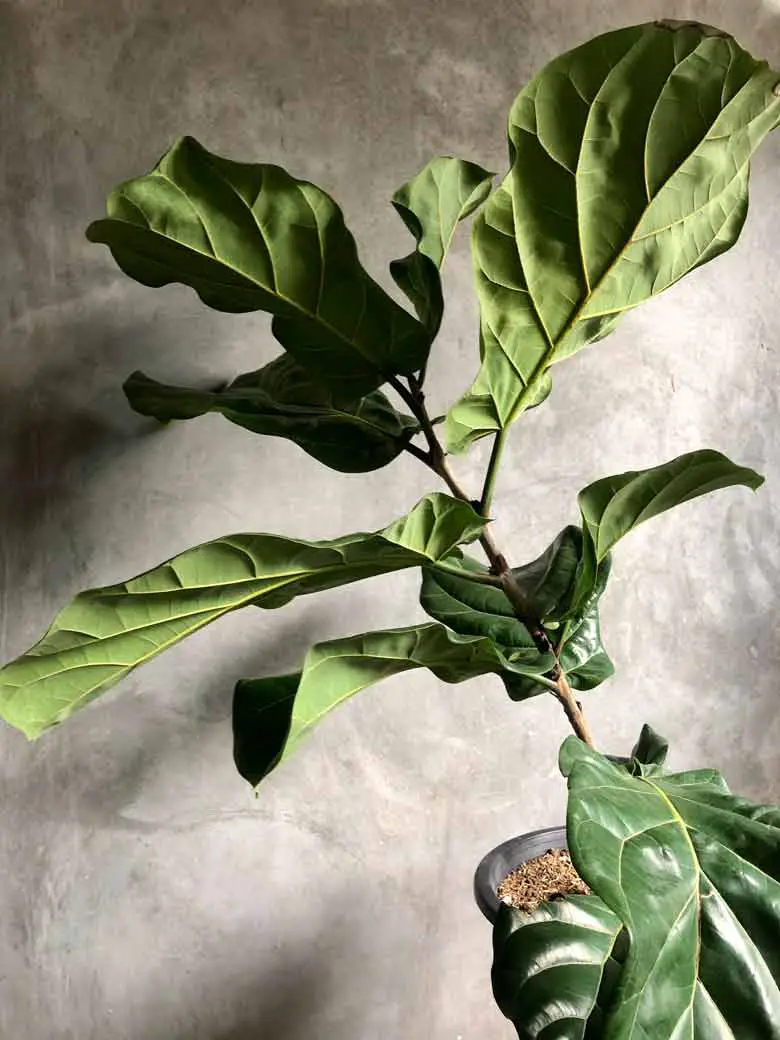
Fiddle Leaf Figs thrive in high humidity environments.
If the air in your home is too dry, it can cause your plant’s leaves to curl.
Low humidity can cause the leaves of a Fiddle Leaf Fig to become dry and crispy.
The edges of the leaves will start to turn brown and eventually curl up and drop off.
Other common symptoms of low humidity are:
- Dry, brown leaves
- Leaves that are dropping off
- Brittle stems
How To Fix It
If you think low humidity is causing the leaves of your Fiddle Leaf Fig to curl, there are a few things you can do to fix the problem.
One of the best ways to increase humidity is to mist your plant with water.
Misting will help raise the humidity around your plant, which can help prevent the leaves from curling.
You can also try placing your plant on a pebble tray.
A pebble tray is a tray filled with gravel or rocks, and water.
The water will evaporate and increase the humidity around your plant.
If you live in a particularly dry climate, you may need a humidifier to increase the humidity around your Fiddle Leaf Fig.
4. Heat Stress
The Fiddle Leaf Fig is a tropical plant and prefers warm, humid environments.
However, if the temperature around your plant is too hot, it can cause the leaves to curl.
Heat stress can cause the leaves of a Fiddle Leaf Fig to turn yellow and brown and eventually drop off.
Other common symptoms of heat stress are:
- Leaf drop
- Stunted growth
- Wilting leaves
How To Fix It
If you think heat stress is causing the leaves of your Fiddle Leaf Fig to curl, there are a few things you can do to fix the problem.
First, try to move your plant to a cooler location.
Make sure your plant is not in direct sunlight.
Fiddle Leaf Figs prefer indirect light, and too much direct sunlight can cause the leaves to curl.
If your plant is in direct sunlight, try moving it to a shadier spot.
Another way to help your plant recover from heat stress is to mist it with water.
Misting will help to cool down the leaves of your plant and can prevent further damage.
Finally, make sure the temperature around your plant is not too hot.
Fiddle Leaf Figs prefer temperatures between 65 and 75 degrees Fahrenheit.
If the temperature is still too hot, you may need to use a fan to create a breeze around your plant.
5. Sunburn
Fiddle Leaf Figs are tropical plants and prefer indirect sunlight.
If the leaves of your plant are exposed to too much direct sunlight, it can cause the leaves to curl.
Sunburn can cause the leaves of a Fiddle Leaf Fig to turn yellow, brown, or red.
The leaves will eventually start to curl and drop off.
Other common symptoms of a sunburned Fiddle Leaf Fig are:
- Brown or yellow patches on the leaves
- Leaves that are wilted or drooping
- Leaves that are crisp or papery
How To Fix It
If you think your Fiddle Leaf Fig has sunburn, the best solution is to move it to a location with filtered or indirect light.
If the leaves are only slightly damaged, they will eventually grow back.
However, if the leaves are severely damaged, they will not be able to recover.
In this case, you must wait for new growth to appear.
When grown indoors, Fiddle Leaf Figs should be placed in an east- or west-facing window.
They should be kept out of direct sunlight, which can be too harsh for the leaves.
If you live in a warm climate, you may need to provide extra protection from the sun by placing your plant in a shaded location.
You can also try using a sheer curtain to filter the light.
When grown outdoors, Fiddle Leaf Figs should be placed in a shady spot.
They can tolerate some direct sunlight, but too much sun will damage the leaves.
If you live in a warm climate, it’s best to grow your Fiddle Leaf Fig in a pot to move it to a shaded location when necessary.
6. Pests
Pests can cause the leaves of a Fiddle Leaf Fig to curl.
Mealybugs, aphids, spider mites, and scale insects are all common pests that can infest a Fiddle Leaf Fig.
Pests can cause the leaves of a Fiddle Leaf Fig to turn yellow, brown, or red.
They can also cause the leaves to curl, drop off, and become distorted.
Other common symptoms of pests are:
- Sticky leaves
- Leaves with webbing
- White, powdery substance on the leaves
How To Fix It
If you think your Fiddle Leaf Fig has pests, you can do a few things to eliminate them.
First, try to remove the pests by hand.
Use a cotton swab or Q-tip dipped in rubbing alcohol to remove mealybugs, aphids, spider mites, and scale.
You can also use insecticidal soap or neem oil to eliminate pests.
These are natural solutions that will not harm your plant.
To use insecticidal soap, mix 1 teaspoon of soap with 1 cup of water.
Spray the solution on the affected area and cover all the pests.
You must reapply the solution every few days until the pests are gone.
To use neem oil, mix 1 teaspoon of neem oil with 1 cup of water.
Spray the solution on the affected area and cover all the pests.
Neem oil must also be reapplied every few days until the pests are gone.
7. Diseases
Diseases can cause the leaves of a Fiddle Leaf Fig plant to curl.
Fungal diseases, such as powdery mildew and botrytis, are common problems that can affect a Fiddle Leaf Fig.
These diseases cause the leaves to curl and become covered in a white or gray powder.
Keeping the leaves dry and performing regular fungicide treatments is essential to control these diseases.
Bacterial diseases, such as bacterial leaf spot and bacterial canker, can also cause the leaves of a Fiddle Leaf Fig to curl.
These diseases cause Fiddle Leaf Fig leaves to develop brown spots.
How To Fix It
If you think your Fiddle Leaf Fig has a disease, there are a few things you can do to get rid of it.
First, remove the affected leaves.
This will help to prevent the disease from spreading.
Next, keep the leaves dry and perform regular fungicide treatments.
You can also try using a copper fungicide or a Bacillus subtilis bactericide.
These are natural solutions that will not harm your plant.
8. Nutrient Deficiencies
Nutrient deficiencies can cause the leaves of a Fiddle Leaf Fig to curl.
Nitrogen, phosphorus, and potassium are the three most common nutrients a Fiddle Leaf Fig needs.
When these nutrients are lacking, the leaves will curl and turn yellow.
Other common symptoms of nutrient deficiencies are:
- Leaf discoloration or distortion
- Stunted growth
- Slow growth
- Yellowing of leaves
How To Fix It
If you think that your Fiddle Leaf Fig has a nutrient deficiency, you should first test the soil.
You can buy a soil test kit from your local nursery or garden center.
Once you know what nutrients are lacking, you can add them to the soil with fertilizer.
Make sure to follow the instructions on the fertilizer packaging.
Overfertilizing your Fiddle Leaf Fig can be as harmful as not fertilizing it.
You can also try to add organic matter to the soil to help with nutrient absorption.
Compost or well-rotted manure are both good options.
9. Too Much Fertilizer
If you notice your fiddle leaf fig’s leaves are curling, it could be a sign that you’re overfertilizing your plant.
When you fertilize your fiddle leaf fig, you’re giving it a boost of nutrients it needs to grow.
However, if you fertilize too often or use too much fertilizer, you can end up causing damage to your plant.
Too much fertilizer can cause the leaves of your Fiddle Leaf Fig to curl and turn yellow.
It can also lead to root burn, which can damage your plant.
Other common symptoms of overfertilization are:
- A crust of fertilizer on the soil
- Yellowing and wilting of lower leaves
- Brown leaf tips and margins
- Root rot
- Leaf drop
- Slow or stunted growth
How To Fix It
If you think you may have over-fertilized your Fiddle Leaf Fig, you must stop fertilizing it altogether.
Let the plant rest for a few weeks to see if the leaves start to uncurl and return to normal.
If they don’t, you can try flushing the soil with water to remove any excess fertilizer that may be present.
Water your plant deeply and allow the water to run out of the drainage holes.
Repeat this process a few times until you see the water running clear.
Once the plant has rested and the leaves have started to uncurl, you can begin fertilizing it again.
But be sure to use half the amount of fertilizer you normally use and fertilize only every other month during the growing season.
10. Compacted Soil
If the soil around your Fiddle Leaf Fig is too compacted, it can cause curled leaves.
When the soil is compacted, it doesn’t allow air and water to move freely through it.
This can lead to several problems for your plant, including:
- Root rot
- Stunted growth
- Yellowing leaves
- Leaf curl
How To Fix It
If you think your Fiddle Leaf Fig’s leaves are curling because of compacted soil, the best thing you can do is to repot your plant.
When you repot your plant, use a light and airy potting soil mix to allow the roots to breathe.
Add some organic matter, such as compost or perlite, to the potting mix to help drainage.
Once you’ve repotted your plant, water it well and let the soil dry out completely before watering again.
This will help prevent the roots from sitting in water and becoming too wet.
11. Transplant Shock
Transplant shock is another common reason Fiddle Leaf Fig leaves may start curling. It occurs when a plant is moved from one location to another and doesn’t have time to adjust to its new environment.
This can happen when you repot your plant or move it to a new location in your home.
Other common symptoms of transplant shock are:
- Leaf drop
- Wilting leaves
- Browning leaves
- Stunted growth
How To Fix It
If you think your Fiddle Leaf Fig is experiencing transplant shock, the best thing you can do is to give it time to adjust to its new environment.
Transplant shock can be a stressful experience for your plant, so it’s essential to be patient and give it the time it needs to recover.
In the meantime, there are a few things you can do to help your plant recover from transplant shock:
- Water your plant regularly and ensure the soil is moist but not wet.
- Place your plant in a location where it will receive bright, indirect light.
- Avoid fertilizing your plant until it has fully recovered from transplant shock.
How To Prevent Fiddle Leaf Fig Leaves From Curling
Now that you know some of the most common reasons why Fiddle Leaf Fig leaves curl let’s look at how you can prevent it from happening in the first place.
Here are a few tips to keep in mind:
1. Choose The Right Potting Mix
When repotting your Fiddle Leaf Fig or planting it in a new pot, use a light and airy potting mix that will allow the roots to breathe.
A good potting soil for Fiddle Leaf Figs should be well-draining yet moisture-retentive.
Add some organic matter, such as compost or perlite, to the potting mix to help drainage.
2. Water Your Plant Properly
One of the most important things you can do to prevent Fiddle Leaf Fig leaves from curling is to water your plant correctly.
Fiddle Leaf Figs are drought-tolerant plants, so they don’t need a lot of water.
Too much water can be just as harmful as too little water.
To water your Fiddle Leaf Fig, give it a good soak and then allow the soil to dry out completely before watering again.
If you’re unsure how often to water your plant, stick your finger in the soil up to the first knuckle.
If the soil is dry, it’s time to water.
3. Place Your Plant In The Right Location
Fiddle Leaf Figs need bright, indirect light to thrive.
If your plant is not getting enough light, it will stretch, and the leaves will become thin and lean.
The leaves will curl and turn brown if your plant gets too much direct sunlight.
To prevent this from happening, be sure to place your plant where it will receive bright, indirect light.
4. Keep The Temperature Consistent
Fiddle Leaf Figs prefer temperatures that are between 65-75 degrees Fahrenheit.
If the temperature is too cold, the leaves will curl and turn brown.
To prevent this from happening, keep the temperature in your home consistent and avoid placing your plant near drafty windows or doors.
5. Repot Your Plant Every 2-3 Years
Fiddle Leaf Figs are fast-growing plants that must be repotted every 2-3 years.
When repotting your plant, use a pot that is only one size larger than the current pot.
Using a pot that is too large will cause root rot, and the leaves will start to curl.
Final Thoughts
Fiddle Leaf Fig care can be tricky, but don’t get discouraged!
These plants are definitely worth the effort.
If you see your Fiddle Leaf Fig leaves curling, it’s essential to figure out the cause so that you can take steps to fix the issue.
Curled leaves are often caused by stressors like too much or too little water, incorrect lighting, or pests.
By taking a closer look at your plant and making some adjustments, you can help your Fiddle Leaf Fig thrive.

